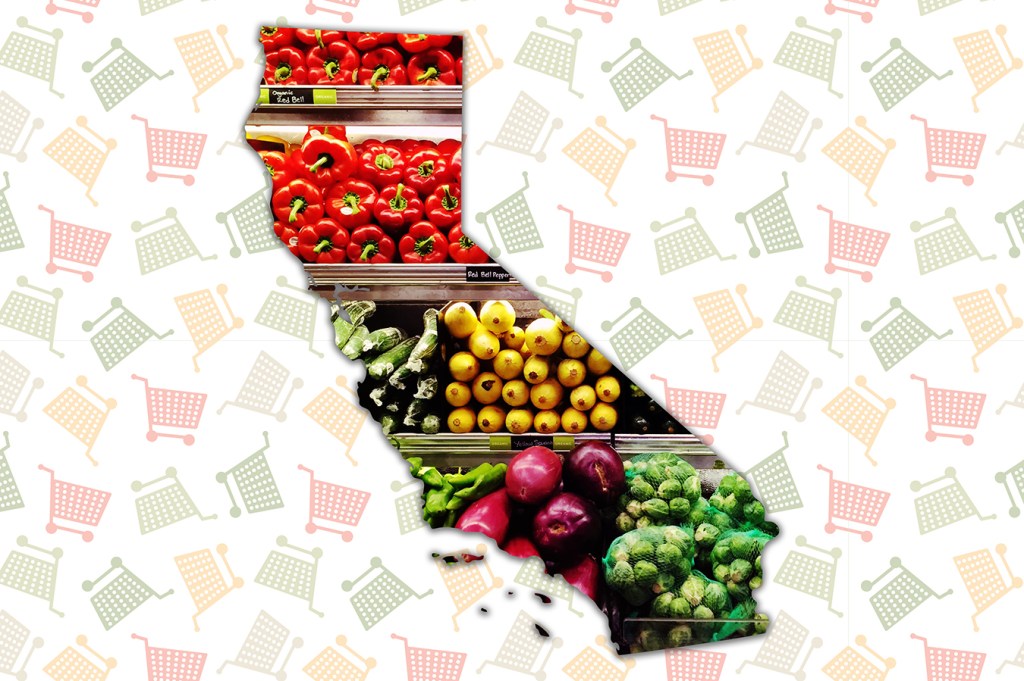Rosalinda Lopez is counting down the days until Saturday. That’s when she gets to go grocery shopping.
For nearly two years, the Los Angeles grandmother has depended on a food pantry to get enough to eat. She can’t afford to shop at a grocery store.
So, once a month she takes four buses to get to the pantry, a two-hour journey one way to collect canned goods for herself and her mentally disabled granddaughter, Alejandra, who lives with her.
Rosalinda Lopez sits at her kitchen table in her Eastside Los Angeles apartment, where she lives with her disabled granddaughter. She already has a list of the food items she is going to buy on June 1, the day that she and hundreds of thousands of other older and disabled Californians will be eligible to go grocery shopping with their new CalFresh benefits.(Courtesy of Marisol Mota)
Lopez, 64, has diabetes and relies on a walker. Her disabilities entitle her to $900 a month in Supplemental Security Income (SSI). Every penny of that goes to pay the rent on her Eastside L.A. apartment.
But starting June 1, she will be able to shop in a grocery store. She — and up to 800,000 other disabled and senior Californians who currently receive SSI — will become eligible for federal food aid through the Supplemental Nutrition Assistance Program (SNAP).
In California, the program goes by the name CalFresh and is the nation’s largest federally funded food assistance program.
California is the last state to make federal food aid available to SSI beneficiaries. “It’s long overdue,” said Kim McCoy Wade, chief of CalFresh, a branch of the California Department of Social Services.
Current California law specifically prohibits anyone who collects SSI benefits from also receiving food assistance. But last year, then-governor Jerry Brown signed a bill to change that.
“We hear a lot about people with disabilities barely managing to hang onto their apartments,” McCoy Wade said. “This will free up cash that is critical for them to keep their housing.”
McCoy Wade said the change will bring in hundreds of millions of dollars in additional federal food funding.
McCoy Wade’s department is sending out 1 million postcards this month to California’s SSI recipients to inform them of their new benefit.
Dan Goff, 70, received one of the postcards this week. The retired El Monte city worker said that after paying rent for a room in somebody’s house he has about $300 left a month to eat. That’s $10 a day.
“This is gonna help me big time,” he said. “I’ve never run out of money because I budget, but I’ve come really close to it. If I’m down to the wire, I’m making eggs and open up cans of Spam.”
State officials and advocates for low-income people hope that CalFresh benefits will help the many senior Californians who don’t have enough money to ensure adequate access to food.
Among Californians age 60 and older, 8.4% lack such access, compared with the national average of 7.7%, according to a study released earlier this month by Feeding America, a Chicago-based nonprofit hunger relief organization.
The percentage of seniors who lack reliable food access in the Los Angeles metropolitan area (8.9%) and in the San Jose area (11.5%) is higher than the statewide figure, while in the San Francisco Bay Area (5.2%) and the San Diego region (3.9%) it is significantly lower, according to the study.
The state is asking nonprofit organizations and social services agencies in all 58 counties to help newly eligible people sign up for food benefits.
Lopez found out she was eligible from a voice message left on her phone by staff at the Mexican American Opportunity Foundation in Montebello.
She became so excited that she saved it to replay for friends and family. As thankful as she is for the pantry she has relied on for the past two years, she said she can’t wait to buy food that is fresh, not canned or boxed. Among the items she rattled off: Meat. Milk. Eggs. Juices. Bananas.
“I think I’m going to go crazy at the store,” Lopez said. “I’m just so happy right now.”
Those who qualify for food assistance will receive an electronic debit card on which funds will be loaded at the beginning of each month. The amount will vary depending on each individual’s circumstances, but will likely average $105 to $110 a month, said Adam Weintraub, a spokesman for the California Department of Social Services.
McCoy Wade said CalFresh recipients will be able to shop for their groceries online as early as next year.
A pilot program allowing SNAP beneficiaries to do that is underway in New York state. “We’re next in line,” McCoy Wade said.
If you or someone you know wants to sign up for food benefits, log on to GetCalFresh.org to apply online or call 1-877-847-3663 (FOOD) for assistance in English, Spanish, Cantonese, Vietnamese, Korean and Russian. For speech and/or hearing assistance, dial 711 (in most counties).
Or you can find the address of your local county office at CalFreshFood.org and walk in.
